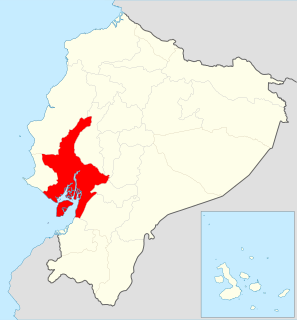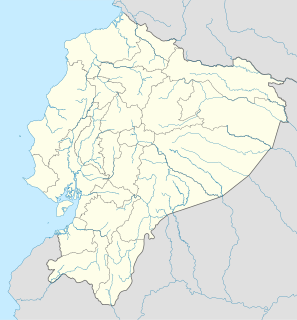| Tulcán Canton | |
|---|---|
| Canton | |
 Location of Carchi Province in Ecuador. | |
 Cantons of Carchi Province | |
| Coordinates: 0°48′42″N77°43′7″W / 0.81167°N 77.71861°W | |
| Country | |
| Province | Carchi Province |
| Capital | Tulcán |
| Time zone | ECT (UTC-5) |
Tulcán Canton is a canton of Ecuador, located in Carchi Province. Its capital is the city of Tulcán. The population of the canton in the 2001 census was 77,175 [1] and 86,498 in the 2010 census. [2] The area of the canton is 1,801 square kilometres (695 sq mi).

The Cantons of Ecuador are the second-level subdivisions of Ecuador, below the provinces. There are 221 cantons in the country, of which three are not in any province. The cantons are further sub-divided into parishes, which are classified as either urban or rural. Below is a list of cantons by province.

Christopher velez de CNCO es de ecuador

Carchi is a province in Ecuador. The capital is Tulcán. The Carchi River rises on the slopes of Chiles volcano and forms the boundary between Colombia and Ecuador near Tulcan. Rumichaca Bridge is the most important land route between Colombia and Ecuador.
Most of the population of the canton is in the Andes, especially in the city and surroundings of Tulcán, but the land area stretches into the Andes foothills to the west. Tulcan has the highest elevation of any city in Ecuador, 2,950 metres (9,680 ft) above sea level. The northern limit of the canton is the border with Colombia with the most important land passage between the two countries at Rumichaca Bridge.

Colombia, officially the Republic of Colombia, is a sovereign state largely situated in the northwest of South America, with territories in Central America. Colombia shares a border to the northwest with Panama, to the east with Venezuela and Brazil and to the south with Ecuador and Peru. It shares its maritime limits with Costa Rica, Nicaragua, Honduras, Jamaica, Haiti, and the Dominican Republic. Colombia is a unitary, constitutional republic comprising thirty-two departments, with the capital in Bogota.

The Rumichaca Bridge is the principal highway passage between Colombia and Ecuador. The bridge is located 3 kilometres (1.9 mi) from the city of Ipiales, Colombia and 7 kilometres (4.3 mi) from the city of Tulcán, Ecuador. The bridge is located in the Andes at an elevation of 2,763 metres (9,065 ft). The Pan-American Highway crosses the bridge.
The canton is sub-divided into ten parishes: El Carmelo (El Pun), El Chical, Julio Andrade (Orejuela), Maldonado, Pioter, Santa Martha de Cuba, Tobar Donoso (La Bocana de Camumbi), Tufiño, Tulcán, and Urbina (Taya). [3]









